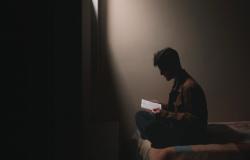Sodom and Gomorrah

Branko Milanovic revisits old classics to see what, if anything, they have to say now.
Le hasard is a capricious master.
When I recently travelled to China, I knew that I would read there books printed in China and about China. So I took none of them with me. The only book that I took there was a book that has nothing to do with China: Proust’s Le temps retrouvé.
This was the third time that I read it: first, as a boy who did not understand most of what happens in the book, then at forty, and finally (I am afraid, for the last time) now.
I never realized before thar this last volume of A la recherche…. (published posthumously and clearly unfinished) is set like a theater piece. There are three or four acts, unfolding in different locales, neither of them (if one were to look at them from a purely “romanesque” point view) likely to have happened –even within the confines of novel, forget about the reality—as described. They were brought there in order to tell a story. One of the acts is, famously, set in a Parisian “hôtel” in 1917 or early 1918 (the year is never given, but the narrative makes this clear) which provides the place where homosexual and other (then considered) vices could be freely exercised. Among the other vices is masochism. Baron de Charlus, one of the main characters of the seven volumes of Proust, is a frequent visitor of this house of ill repute.
De Charlus belongs to one of the most famous families of France. While in the first six volumes of the book, his homosexuality and other “vices” are discussed, they do not lead to the baron’s social fall. In the last volume however that social fall becomes obvious. An elderly de Charlus can no longer control his impulses. Wherever he goes he chases after the young boys to find those (embarrassed after they do it) ready, for a sizeable amount of cash, to beat him. He becomes the object if not fully of ridicule and contempt then surely of free and dismissive conversation, not only among his aristocratic peers, but among the bourgeois inhabiting the same social universe (that includes Proust himself) and among the servants and valets who often provide him with young boys. De Charlus then, like some other members of the most illustrious aristocratic houses of France, no longer finds comfort, or even interest, in frequenting his “equals”. Ostracized, he becomes foreign to his social circle. When he is not beaten to a pulp by the “garçons”, he is playing cards with them. The sexual and social elements are interwoven. The former leads to the change in one’s social position: to the fall.
---—
Several days ago I saw that in a retrospective of the films of the 1970s (chosen in the memory of the French cinema critic Serge Daney) Lincoln Center in New York was showing Pasolini’s “Salò or 120 days of Sodom”. I was a high-school student when I first real about the movie. It was spoken of, written about, and became to some extent, famous. I have never seen it. It is based on de Sade’s unfinished novel. I knew that Pasolini set it in Salò, the lake town in Northern Italy to which the Mussolini government, after being overthrown in Rome, withdrew, or rather escaped, in 1943-44. I thought that as the then-, and even today’s, reviews write, it would treat of depravity in its social context. The Salò Repubblica Sociale was created as a desperate attempt to safeguard the Fascist rule in any, however small, part of Italy. Its rulers, like in the last days of the Hitlerite regime, knew that it cannot last long. Hence, they could unleash their sadism and debauchery on anyone they could find around, knowing well that in some sense they were immune from punishment: their punishment was death, whether in Salò they behaved rightly or wrongly.
I thought that Pasolini, whose left-wing credentials are well-known, would set the “vice” within its social context. But the film totally disabused me of that idea. It is an exercise in gratuitous sexual and other violence. It ostensibly, and falsely, and unconvincingly, places the “events” in a Fascist-ruled place, but other than showing the name of the town in the very beginning of the film, it does nothing else with it. It is not an exercise in studying how “the absolute power corrupts absolutely” but a self-indulging exercise in shocking the audience.
The film was sold out (there was only one show). I made a mistake of not buying the ticket in time, and had to wait in line for almost an hour. The audience applauded, even if weakly and somewhat awkwardly, in the end.
What it shows, if anything, is how a self-declared left-wing and socially conscious author like Pasolini created a time- and place-unrelated act with the objective of shocking sensibilities and tastes with total absence of delicatesse—while, half a century earlier, a self-declared art-for-the art’s sake writer situated sexual mores and “vices” in their social context.
The objectives of the two authors were very different from what they accomplished.
This first appeared on Branko's blog.
Photo by Dayan Rodio


